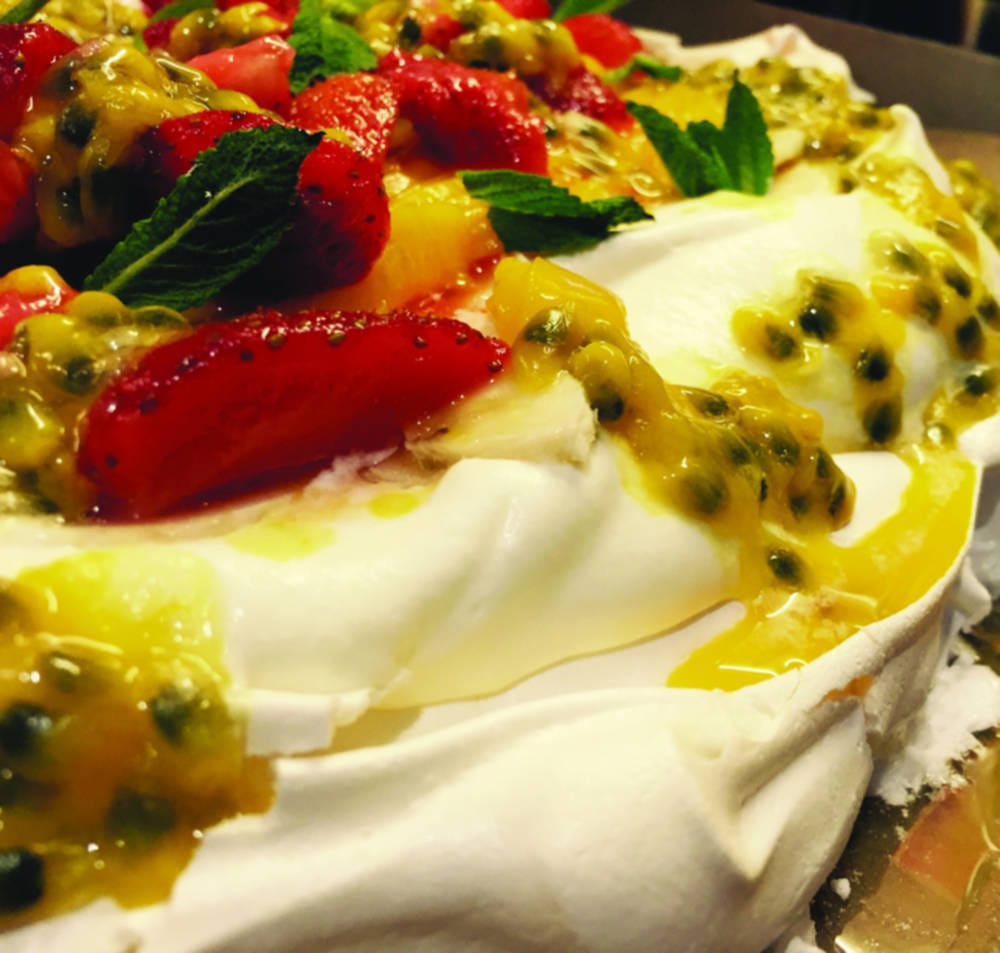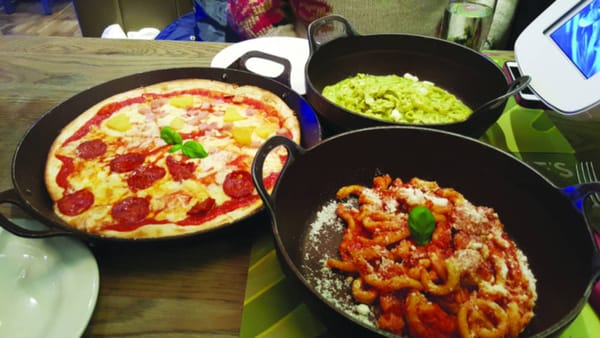Pavlov(a)’s dog
This week's recipe

Not as complex to make as a fine éclair, but with just as much flair and style, a pavlova is a delicious summer pudding. Hailing from New Zealand or Australia, depending on who you believe, it was named after the famed ballerina Anna Pavlova, whose ethereal frills it resembles. It’s a pretty classic dessert now – but for a very good reason. What could go wrong with a crispy, marshmallow-like cake with heaps of whipped cream and fresh fruit?
Well, the short answer is everything. Pavlovas require a lot of arm work – or an electric beater – to make the meringue, which after all that effort can split and become watery in the oven. After your careful beating and baking, the meringue can then collapse as you let it rest.
This recipe is designed to be as fool proof as possible, but you do have to follow all the steps as accurately as possible!
Fruit wise, it’s entirely up to you – I am particularly fond of a pavlova with mango, strawberries and passion fruit, but will also happily add pineapple, any fresh berries or even thinly sliced apple. Just make sure that it’s fresh, tasty and ideally in season.
Ingredients:
6 egg whites, from medium eggs – make sure there is absolutely no egg yolk!
330g icing sugar (caster can be used, but takes longer to dissolve)
2 teaspoons white vinegar
1 teaspoon cornflour
300mls whipping cream
Fresh fruit – see above
Speed is key here. Preheat the oven to 120C – and don’t use the fan. Line a baking tray with greaseproof paper, and draw a circle on it as a template for your pavlova. Take a large mixing bowl and make sure it is very clean – any fat will stop the egg whites from whipping. Add all the egg whites, and start beating! It’s easiest to use a whisk, though some people swear by a fork. This stage is much easier with electric beaters. Once they reach very stiff peaks, start incorporating the sugar, one tablespoon at a time. The mixture should transform into a glossy, smooth meringue. Feel a small amount inbetween your fingers – it should be completely smooth, with no sugar. If there is any, keep whisking to dissolve it. When it’s all dissolved, fold in the vinegar and cornflour. Scoop the mixture onto your prepared paper, and spread to your desired shape. I like mine very thick with a chewy/gooey core, but some people go thin and crispy. Bake in the oven for 1-2 hours, turning the oven off as soon as the meringue begins to colour. Don’t worry if it leaks a small amount of sugar syrup. Turn the oven off, and leave the meringue to cool inside with the door open.
When completely cool, start building the pavlova. Whip the cream – add a touch of icing sugar if you like, or maybe some fruit puree – and spoon that over the base. Top with the fresh fruit, and maybe sprinkle some toasted flaked almonds or white chocolate curls on top. Devour.









